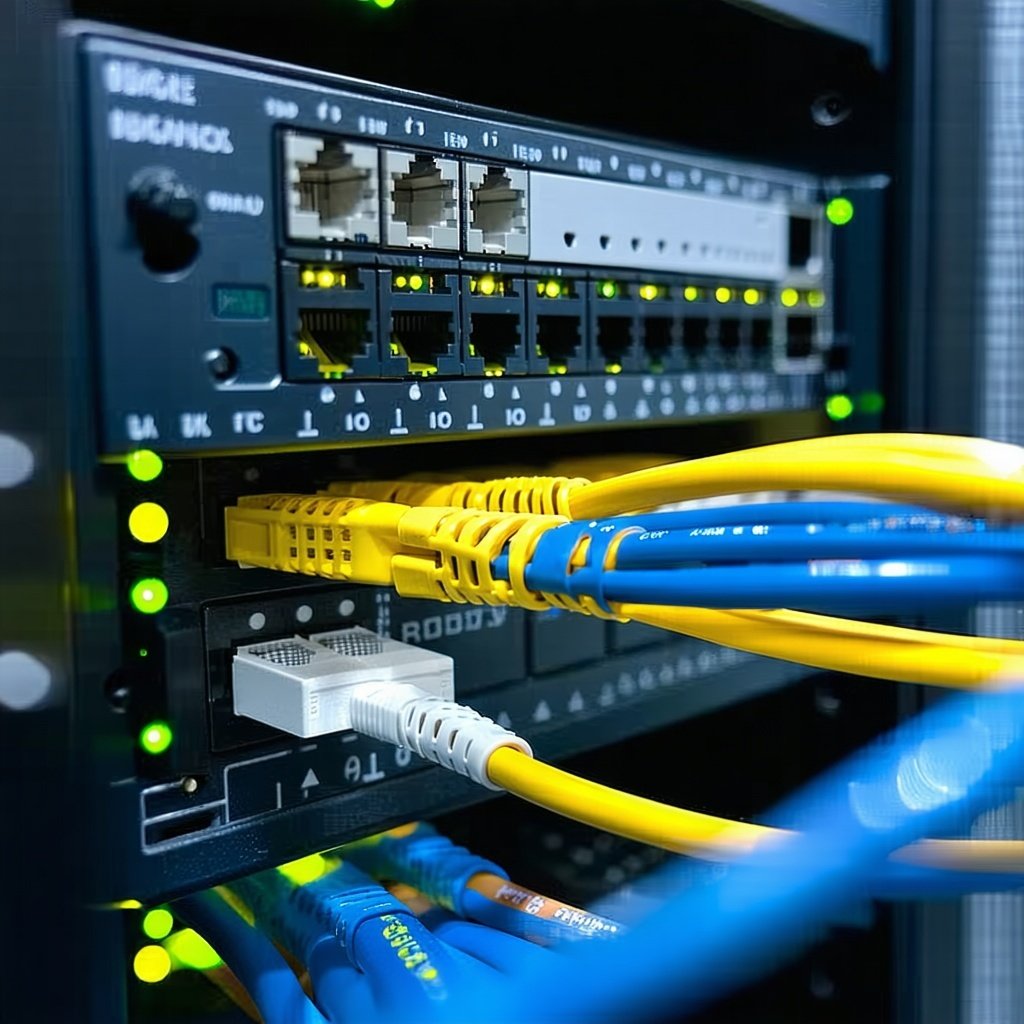Which Low Light Security Camera Is Right for You: A Detailed Comparison
Footage captured at night often fails when it’s needed most. Standard security cameras struggle to maintain clarity in dark or unevenly lit areas,...
4 min read
 Tony Ridzyowski
:
Jul 17, 2025 5:00:00 PM
Tony Ridzyowski
:
Jul 17, 2025 5:00:00 PM
Is your library missing out on e-rate broadband funding?
K-12 schools and public libraries are essential providers of internet access and digital literacy, especially in underserved communities. Yet many operate with outdated infrastructure, slow broadband, and limited Wi-Fi coverage, putting students and library patrons at a disadvantage.
The federal E-Rate program, a cornerstone of the Universal Service Fund administered by the Federal Communications Commission (FCC), offers discounts ranging from 20 to 90 percent to help eligible schools and libraries upgrade their internet infrastructure. This includes both external broadband services and internal Wi-Fi networks.
Despite the available support, the complexity of the application process keeps many institutions from participating. Filing FCC Form 470, following state procurement rules, managing vendor bids, and maintaining compliance with program requirements can overwhelm even well-resourced teams.
The result? E-Rate funding often goes unclaimed, especially by small districts and libraries that need it most. This guide explains how the E-Rate program works, what’s changing for the next funding year, and how to simplify the process so your school or library can secure the discounts it’s entitled to.
The E-Rate program, also called the Schools and Libraries Program, is administered by the Universal Service Administrative Company (USAC) under the FCC. It provides discounts for eligible telecommunications and information services, making broadband and internet access more affordable for schools and libraries. The amount of the discount is based on the poverty level and location of the applicant, typically determined by National School Lunch Program data.
Category One funding supports broadband services that bring internet access into a school or library building. Eligible services include leased lit and dark fiber, digital transmission services, and wide area network (WAN) links. There is no funding cap in this category, which allows schools and libraries to build the foundational connectivity needed for Wi-Fi and digital services.
Category Two covers eligible products and services used inside the building, including Wi-Fi access points, routers, switches, cabling, and basic maintenance of internal connections. From funding year 2021 through 2025, the budget for eligible schools and libraries is set at $4.50 per square foot. This supports upgrades to internal networks and ensures strong wireless coverage throughout the facility.
In 2025, the E-Rate program expands to include Wi-Fi hotspot lending. Schools and libraries may receive E-Rate discounts for mobile hotspots and associated service plans. These devices help provide internet access beyond library walls, especially for patrons or students without home broadband. To qualify, recipients must maintain proper documentation, monitor usage, and protect user privacy.
Institutions without adequate broadband and internal infrastructure cannot support modern educational and civic programs. Unstable connections disrupt access to essential services like online learning, employment applications, and digital resources. This limits the ability of schools and libraries to fulfill their role as internet access providers.
Public libraries and K-12 schools in rural or underserved areas face widening digital divides when they miss out on E-Rate funding. Without reliable internet access, entire communities fall behind in remote education, telehealth, and government services. The E-Rate program provides discounts designed to prevent this disparity, but participation is key.
Skipping E-Rate delays investments in essential network upgrades. Without access to discounted telecommunications services, libraries and schools defer improvements in Wi-Fi, routers, and structured cabling. This postponement limits growth, increases long-term costs, and weakens the digital readiness of institutions.
Applying for E-Rate requires filing Form 470 to initiate a request for competitive bids and posting it to USAC’s website. After a 28-day bid period, applicants must evaluate vendors, select eligible goods or services, and complete Form 471. Each step must meet FCC and state procurement rules. Mistakes can cause delays or denials.
Recipients of E-Rate discounts must retain documentation for 10 years. This includes bids, contracts, service delivery records, invoices, and proof of compliance with the Children’s Internet Protection Act (CIPA). Incomplete records can result in audits, funding clawbacks, or ineligibility in future years.
Most public libraries and smaller school districts do not have a dedicated E-Rate coordinator. Staff already manage programming, IT, and administrative tasks. Without resources to navigate federal program rules and eligibility criteria, many schools and libraries miss out on eligible funding.
Turn-key Technologies (TTI) partners with K-12 schools and libraries to manage the E-Rate program from start to finish. We help institutions receive discounts on eligible services by handling every step of the process and ensuring compliance.
TTI manages all application stages, from FCC Form 470 to Form 471. We identify eligible products and services, ensure compliance with procurement rules, and manage competitive bidding. Our team tracks deadlines and validates every submission to reduce errors and maximize funding.
We maintain a full documentation system to support compliance with E-Rate program rules. TTI organizes bids, service agreements, and CIPA records to keep your institution audit-ready. Our approach reduces risk and protects your access to future universal service funds.
We don’t just complete paperwork. TTI develops long-term infrastructure strategies that align with E-Rate eligibility and the needs of your library or school. Whether expanding Wi-Fi access, implementing managed internal broadband services, or starting a hotspot lending program, we ensure each investment qualifies under the list of eligible services.
The E-Rate program is one of the most impactful federal tools available to help schools and libraries expand broadband access and improve Wi-Fi infrastructure—but only if the funding is secured. The rules, forms, and deadlines are complex, and one misstep can result in missed opportunities.
Turn-key Technologies (TTI) removes the guesswork. We manage the full lifecycle of the E-Rate process, from strategy and compliance to procurement and documentation. Our team helps you identify eligible services, avoid common application errors, and build a long-term funding plan aligned with your institution’s goals.
Don’t leave federal support on the table. Contact TTI today to schedule a free consultation and get the expert help you need to secure E-Rate discounts.

Tony Ridzyowski leads the Inside Sales Team at Turn-key Technologies, where he also supports marketing, partner relations, training, event planning, and CRM initiatives. With 20+ years of experience and multiple certifications in networking, wireless, and cybersecurity, Tony brings deep expertise to every project. Since joining TTI in 2014, he has earned recognition as a top producer and Presidents Club member. His career also includes roles in the network cabling industry and with Fortune 500 companies such as Wells Fargo and Countrywide Home Loans.

Footage captured at night often fails when it’s needed most. Standard security cameras struggle to maintain clarity in dark or unevenly lit areas,...

Video surveillance is a cornerstone of modern enterprise security, but without clear retention policies, organizations risk overspending on storage,...

1 min read
The Federal Communications Commission (FCC) has released new E-rate guidelines for the upcoming five-year category 2 budget cycle, and it’s good news...